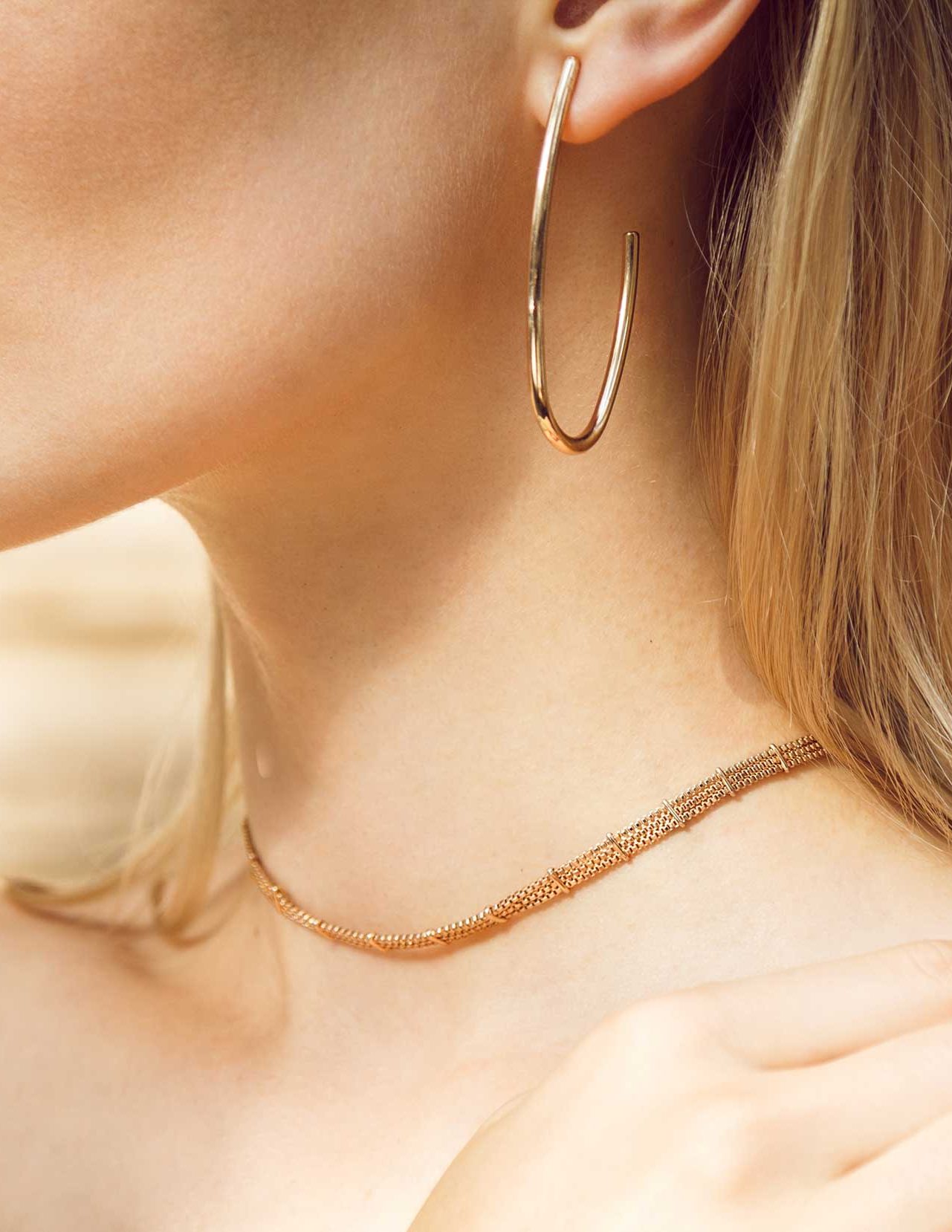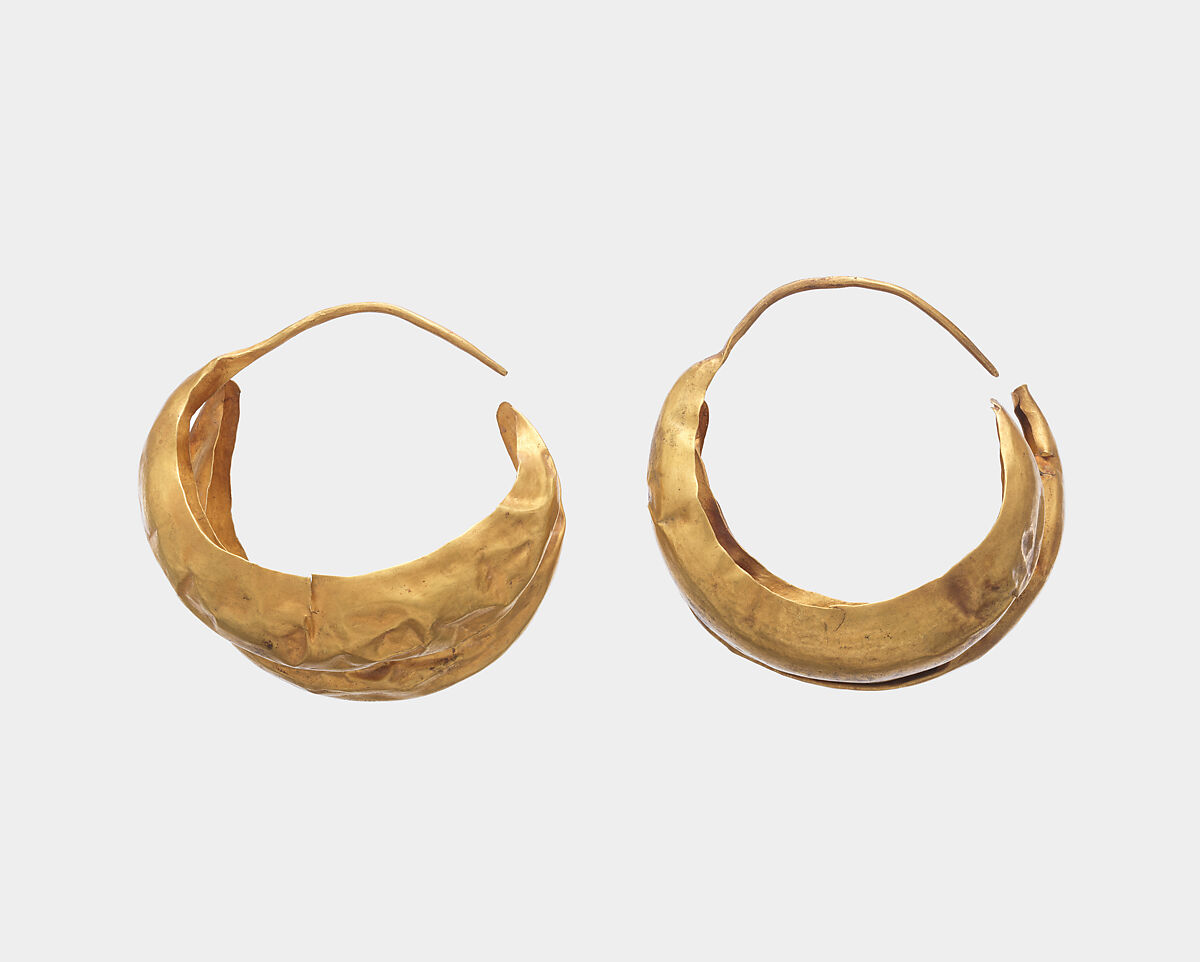The history
Hoop earrings are the most beloved and versatile accessories in the fashion world; their distinctive and fascinating shape has made them a symbol of timeless elegance. They are one of the oldest types of jewellery in the world, and their meaning is rich in cultural and symbolic references.
Since ancient times, the circle has represented the infinite and the universal, and over the millennia it has taken lots of different meanings. From an exclusive representation of the high aristocracy of old, over the years hoop earrings have become accessories worn by all social classes.
The origins of the rings of power
The first findings of Creole earrings date back to 2500 BC, in the region of Nubia. These jewels, made of gold, copper, silver, and bronze, embodied the power of kings and queens, and became symbols of a high social status. With time, the hoops went from simple tribal ornaments to emblems of power and religion in ancient Egypt, Greece, and Rome.

The first hoop earrings prototypes
Around 1500 BC, Creole earrings became popular in ancient Egypt, particularly amongst the aristocracy and the most privileged social classes. Worn by men and women alike, these earrings were a symbol of elegance and beauty.
Over the years, the manufacturing of these jewels progressed and improved, resulting in the creation of increasingly elaborate and refined hoop earrings, embellished by precious pearls.
The usage of such jewellery quickly spread throughout Europe as well, especially in ancient Greece and the Roman Empire. Initially only a privilege reserved to the aristocracy and the wealthier population, they later became in use amongst less affluent social classes.
From the Middle Ages to modern times
Over the centuries, the traditions and uses tied to these earrings often changed, as did their appearance and the meaning they held in ancient time.
During the Middle Ages, great transformations occurred, especially in the goldsmith sector. Creole earrings spread even more thanks to increasingly sophisticated and efficient processes that allowed for precious gems and pearls to be embedded. These earrings became a stylistic ornament worn mainly by women.
In the Renaissance, Creole earrings became less showy, making room for simpler and more elegant models.
In the second half of the 1700s, these accessories became once again popular with men, rapidly spreading amonst the upper classes, including kings and high-ranking military officers.
During the XIX century, hoop earrings underwent yet another stylistic revolution with the introduction of much thinner and lighter models compared to the previous ones. Moreover, it saw the production of Creole earrings made entirely of gold, in a larger size, and without gems or precious pearls.


Creole earrings in the 1900s and in the modern age
The 1900s brought great changes to style and fashion, such as hairstyles that became shorter and shorter, and highlighted the ears. For this reason, during the 1920s and 1930s, hoop earrings became essential for a captivating, complete look.
From the 1960s to today, Creole earrings have established themselves as a reference point in the jewellery world, and are available in a wide range of models, styles, colours, and materials.
Several international fashion icons, like Diana Ross and Cher, have built their personal style using elegant hoop earrings, contributing to their relevance in fashion.
Hoop earrings crossed centuries of history, evolving and adapting to the ever-changing tastes and trends. From symbols of power and social status, they became accessories of timeless elegance, associated to the concepts of fashion and style, also thanks to the fashion icons who made them an integral part of their personal style.




